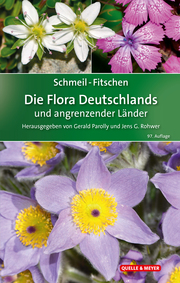Cell Separation in Plants
Physiology, Biochemistry and Molecular Biology, Nato ASI Series (closed) 35, Nato ASI Subseries H: 35
Erschienen am
22.11.2011
Bibliographische Informationen
ISBN/EAN: 9783642741630
Sprache: Englisch
Seiten: xvii, 449 S.
Auflage: 1. Auflage 1989
Einband: kartoniertes Buch
Beschreibung
This NATO Advanced Research Workshop held 25-30 September, 1988 at the Villa Gualino, Turin, Italy, was the first international meeting of its kind to be devoted solely to cell separation in plants. The partial or complete dissociation of one cell from another is an integral process of differentiation. Partial cell separations are basic physiological components of the overall programme of plant development. Complete cell separations are major events in the ripening of fruits, and the shedding of plant parts. Unscheduled cell separations commonly occur when tissues are subjected to pathogenic invasion. Environmental stresses too, evoke their own separation responses. Over the past five years much new knowledge has been acquired on the regulation of gene expression in specific stages of cell differentiation. Specific molecular markers have been identified that designate the competence of cells for achieving separation. Certain of the chemical signals (hormones, elicitors) that must be emitted or perceived by cells to initiate and sustain separation, are now known to us, and the resulting cell wall changes have come under close chemical scrutiny. The Turin meeting was a focus for those currently involved in such investigations. It assessed factors controlling cell separation in a wide spectrum of different cell types under a variety of conditions.
Schlagzeile
InhaltsangabeSection I. Gene Regulation and Gene Expression.- 1. Signals for gene expression in ripening tomato fruit.- 2. Regulation, maturation and function of tomato fruit polygalacturonase.- 3. Characterization and expression of a ripening-induced cellulase gene from avocado.- 4. Gene expression in senescing leaves.- 5. Regulation of ethylene biosynthesis in higher plants: induction and identification of 1-amino-cyclopropane-1-carboxylate synthase.- 6. Auxin- and vound-induced expression of ACC synthase.- 7. Changes in gene expression during ethylene-induced leaf abscission.- 8. The cell biology of bean leaf abscission.- Section II. Cell Wall and Enzyme Changes.- 9. Sorting signals and trafficking of lysosomal and extracellular hydrolases of cell separation.- 10. Extensin peroxidase ties the knots in the extensin network.- 11. Cell wall-derived elicitors - are they natural (endogenous) regulators?.- 12. Polygalacturonase activity in the ripening tomato fruit.- 13. Hormone-regulated modifications to cell wall polysaccharides; relevance to cell separation.- 14. Ethylene and polygalacturonase - what else is involved in cell separation in ripening fruit?.- Section III. Pathogenic Cell Separation.- 15. Signals and cell wall events in plant-pathogen interactions.- 16. Host cell wall loosening and separation by plant pathogens.- 17. The degradation of potato cell walls by pathogens.- Section IV. Signal Specificity and Target Cell Status.- 18. Interference by ethylene with the abscission retarding effects of auxin in citrus leaves.- 19. Identification of leaf abscission zones as a specific class of target cells for ethylene.- 20. IAA mediated cell separation in the sepal splitting of Oenothera lamarkiana flower buds.- 21. Pollination-induced corolla abscission and senescence and the role of short-chain fatty acids in the process.- 22. The abscission process in peach: structural, biochemical and hormonal aspects.- Section V. Cell Separation in Development.- 23. Cell separation: a developmental feature of root caps which may be of fundamental functional significance.- 24. Cell wall changes in ripening peaches.- 25. Regulation of aerenchyma formation in roots and shoots by oxygen and ethylene.- 26. Cell isolation, recognition and fusion during sexual reproduction.- 27. Pectinaceous beads and pectinase on callus cell surfaces in graft unions and in culture.- 28. Signals between plant and bacterial cells: specific domains in cell walls, a new insight.- Section VI. Crop Production and Harvesting.- 29. Bud, flower and fruit drop in citrus and other fruit trees.- 30. Post-harvest berry drop and its control in certain grape varieties.- 31. Olive inflorescence, flower, fruit and leaf abscission with chemicals used for mechanical harvest.- Section VII Additional Contributions.- 32. Putative ethylene binding protein(s) from abscission zones of Phaseolus vulgaris.- 33. Differential abscission and ripening responses to ethylene by tabasco pepper leaves and fruit: protein "marker events" as probes.- 34. Chimeric analysis of cell layer interactions during development of the flower pedicel abscission zone.- 35. The role of ethylene in petal abscission of red raspberry.- 36. Peroxidases and cell wall growth by epicotyls of Cicer arientinum L. Possible regulation by calcium and calmodulin and relationship with cell wall loosening.- 37. A threonine and hydroxyproline-rich glycoprotein from maize.- 38. The role of endosperm degradation in the germination of tomato seeds.- 39. Auxin-derived pear cells in culture as a model system for studying senescence.- 40. Studies on the release of mesophyll protoplasts from Cinchona ledgeriana L.- 41. Cell separation events in Poplar in response to sulphur dioxide and ozone: involvement of ethylene.- 42. Cell wall pectic content as an early signal for cell separation.- Contributor Index.
Weitere Artikel aus der Kategorie "Biologie/Botanik"
Lieferbar innerhalb 1 - 2 Wochen

Lieferbar innerhalb 1 - 2 Wochen

Lieferbar innerhalb 1 - 2 Wochen

Lieferbar innerhalb 1 - 2 Wochen

Lieferbar innerhalb 1 - 2 Wochen

Lieferbar innerhalb 1 - 2 Wochen








